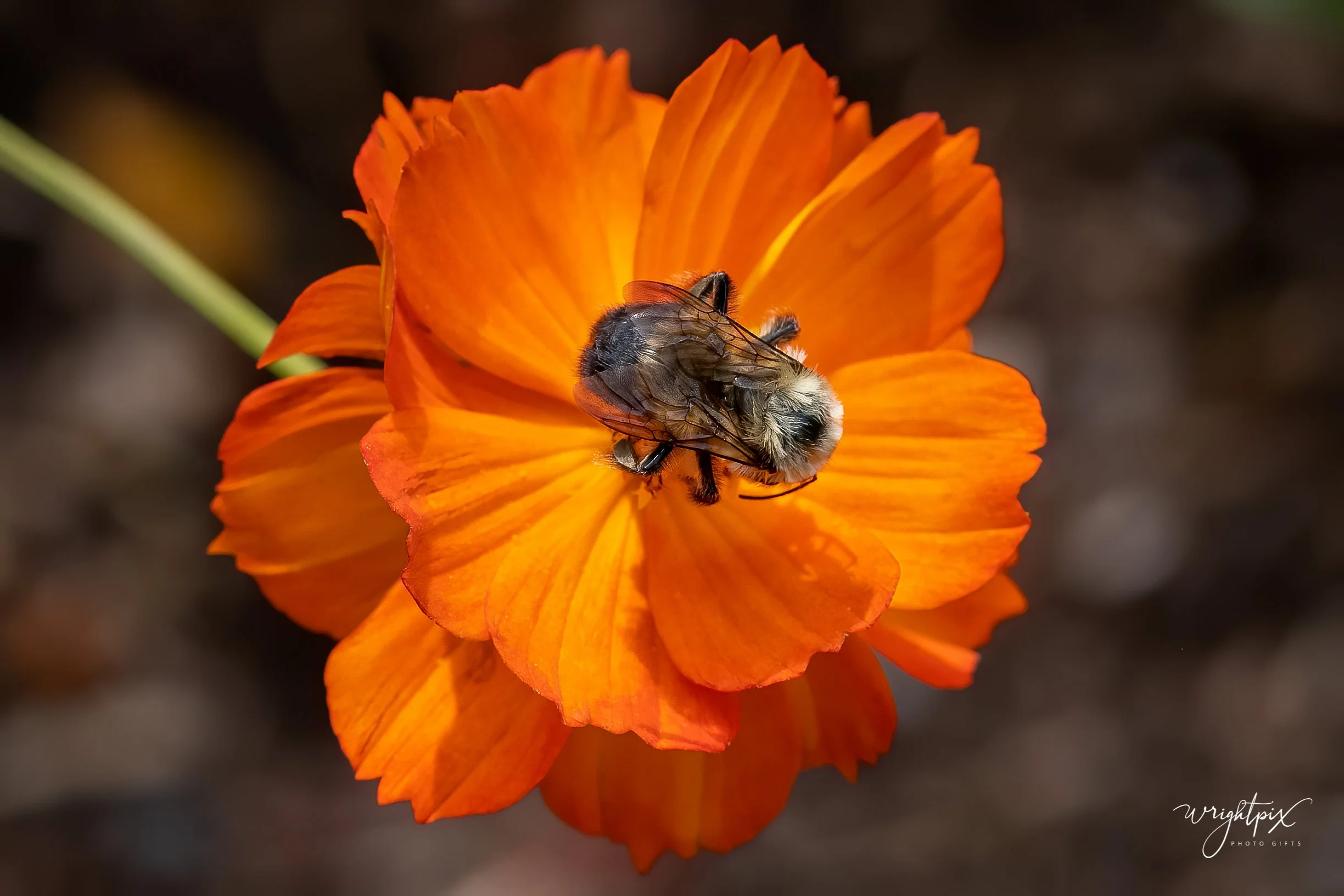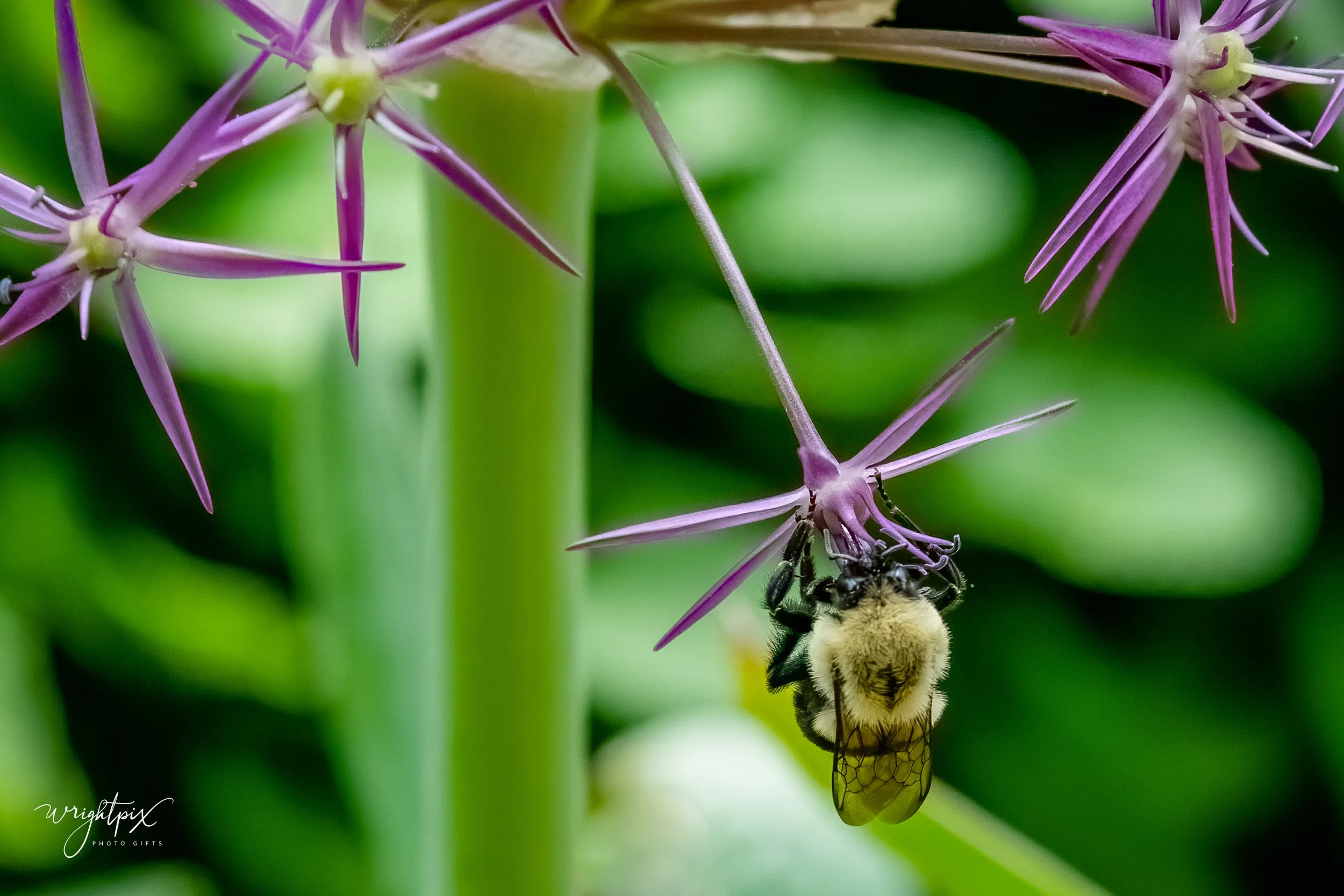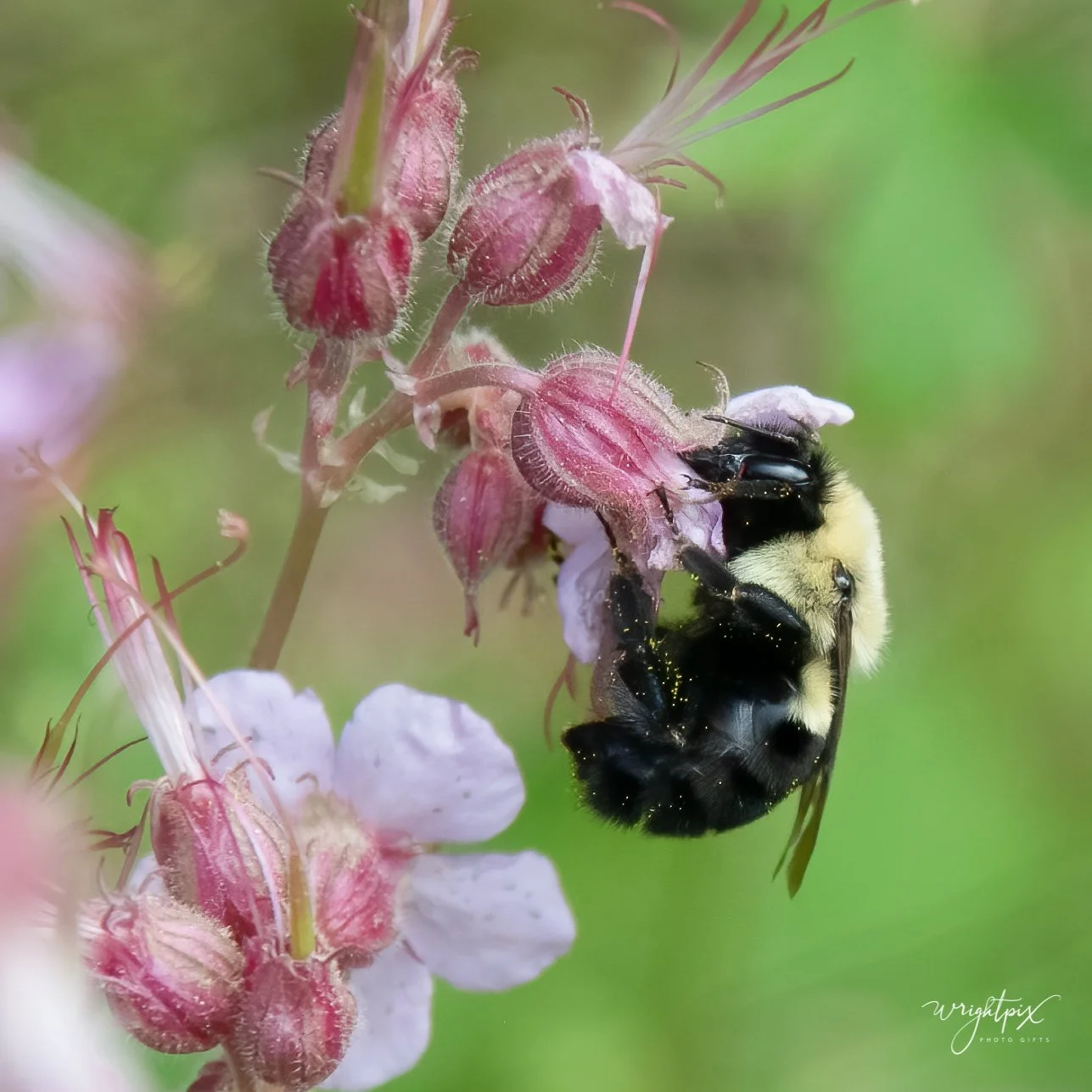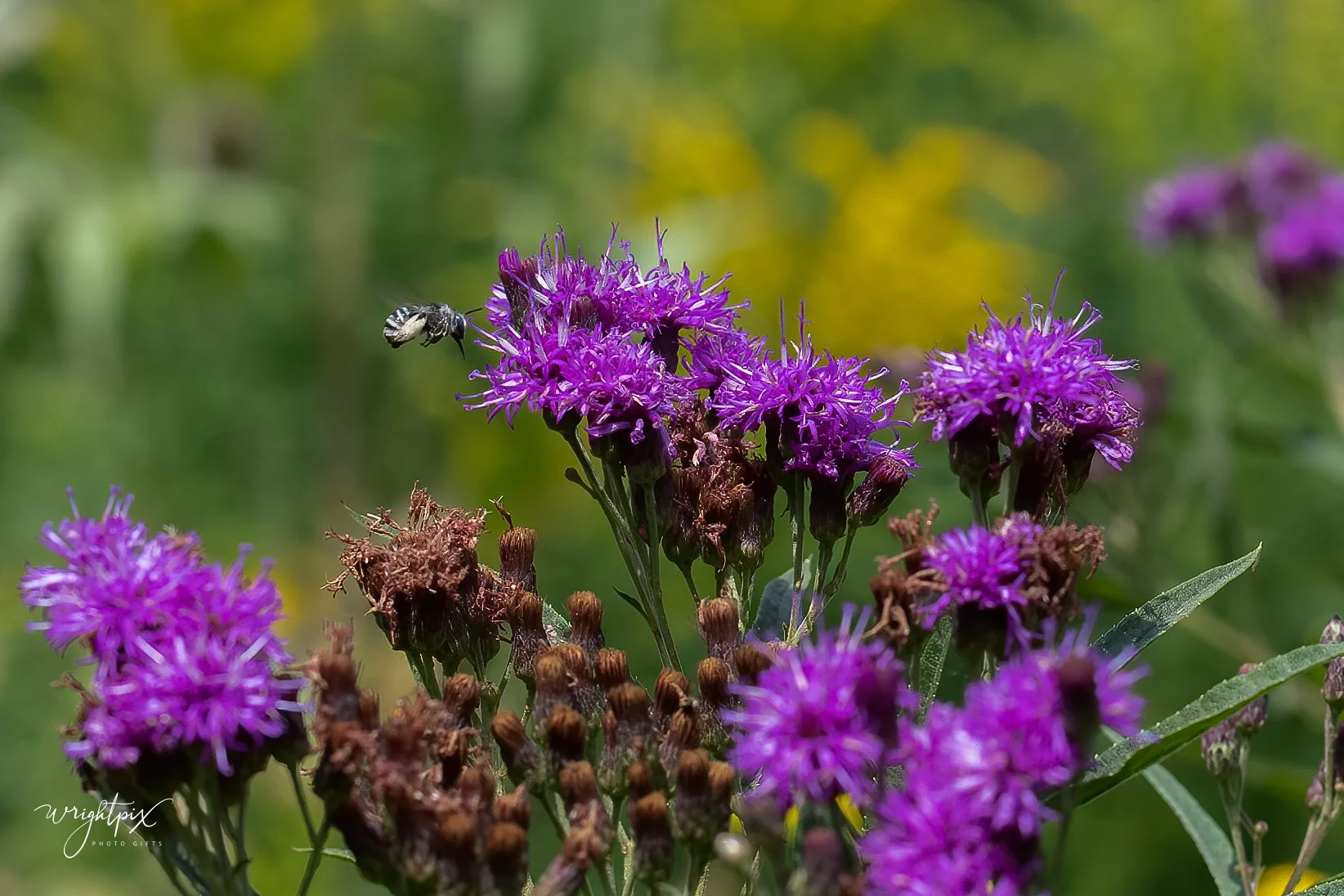GOING LIVE WITH NATIONAL WILDLIFE
For every bee print or product that wrightpix sells, we’ll donate a portion to National Wildlife Federation. Check out our prints, coasters, and ornaments.



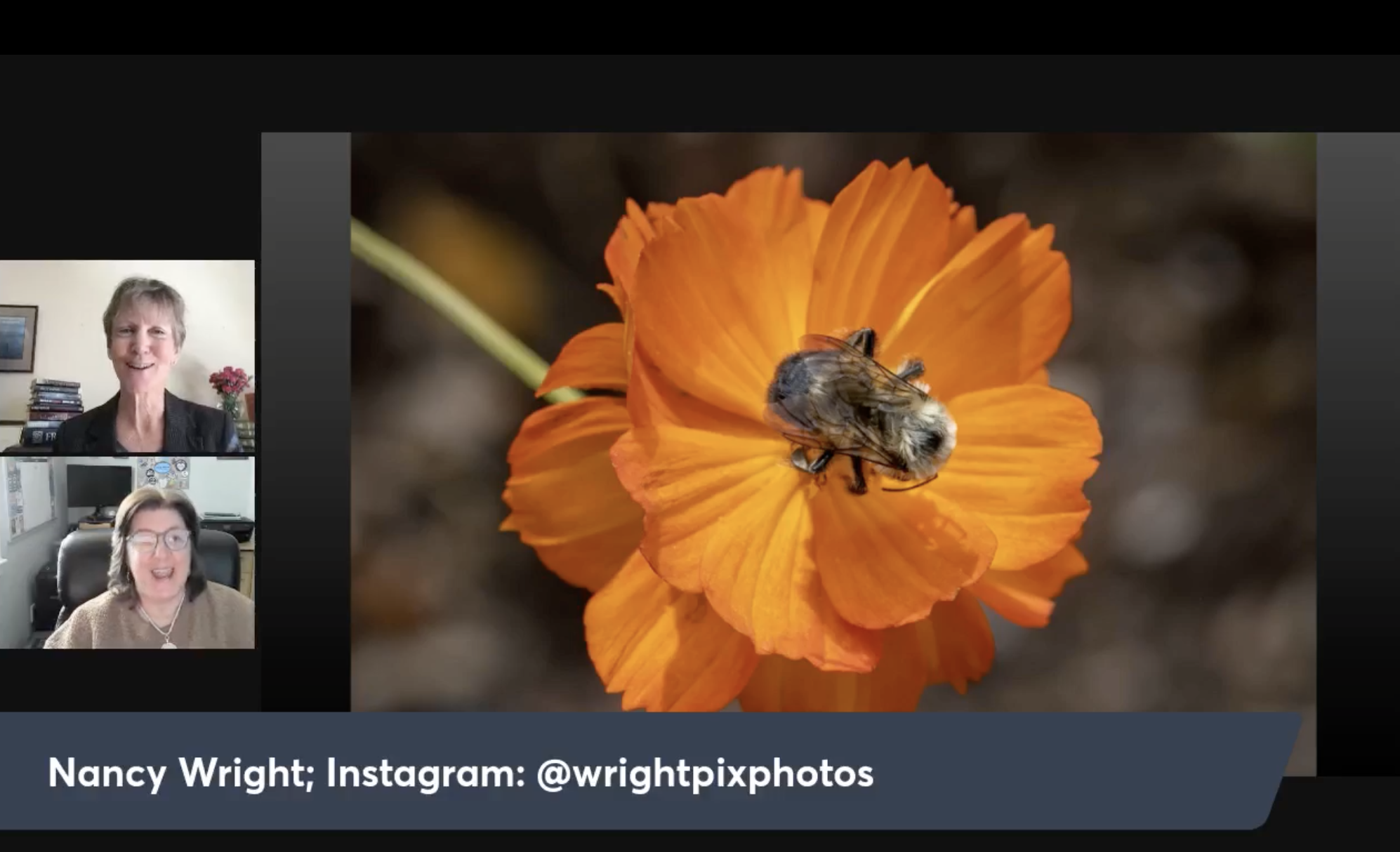
HOW I GOT HERE
In March of 2021, my friend nudged me to enter the National Wildlife 2021 photo contest. I don’t love photo contests for various reasons, so I let the email hang out in my inbox.
In April, she nudged me again, so I entered some of my photos. Actually, I went all in at that point and entered 10 individual images and three portfolios.
The portfolio category was new and called for up to 10 images with a common theme. If the collection of images was cause-based, even better.
All attention fell upon the bees. Out of over 40,000 photos and near 400 portfolios, my bee portfolio won! I had come up with what I thought was a clever title for my portfolio:
BEES NEED OUR Help
This contest inspired me to do some research. I knew I had a lot of strong bee images, so I did a bit of digging. I learned that some experts say one of every three bites of food we eat depends on bees. A statistic that stood out to me :
“U.S. National Agricultural Statistics show a honey bee decline from about 6 million hives in 1947 to 2.4 million hives in 2008, a 60 percent reduction. ... In the U.S. — among crops that require bee pollination — the number of bee colonies per hectare has declined by 90 percent since 1962.”
Sources cite that the worldwide bee colony collapse is due to many reasons, including but not limited to pesticides, drought, habitat destruction, nutrition deficit, air pollution and global warming. Biologists have found more than 150 different chemical residues in bee pollen, a deadly “pesticide cocktail.”
How We Can Help
How to rectify the situation? Suggestions include common sense actions to restore and protect the world’s bees:
Ban the seven most dangerous pesticides.
Protect pollinator health by preserving wild habitat.
Restore ecological agriculture.
BACK TO THE CONTEST & LIVESTREAM
In late November 2021, NWF announced that I had won the portfolio category with my 10 bee images. I was floored, thrilled, and honored. Fast forward to last week. They reached out to see if I would do a Facebook livestream to talk about my experience and images. Absolutely!
We selected six bee images and two owl images for me to talk about and share the stories behind them.
Prepping for the Big Day
I had a Zoom meeting with Lisa Moore, the editorial director, two days before the event. We outlined key points, she picked her favorite bee images, and she made me feel a lot more comfortable. Easy breezy.
The day before, we did a run-through with the other featured photographer, Doug Croft (check out his winning whale photo!), and we had our helpful NWF support team on hand: Robert, Shelby and Delaney.
What a team! What a collaboration! I had around 10 minutes to talk about my photos and share stories and tips. Feedback from everyone who watched said it was a fabulous event.
“Amazing on all fronts, great collaboration! ...this was one of the most interactive livestreams we have done.”
I’m so happy I had this opportunity. Next, I’m working on a webinar to present to Sudbury Valley Trustees and other local organizations. Also, I joined a conservation storytelling group and plan to write a series of articles this summer. This contest has inspired me to care more and do more.
On my list is to add a pollinator garden in my yard, capture more images to help tell the story about bees, and map out my series of stories to pitch to the media to create more awareness and move people to act.
If you know any local beekeepers, please let me know.
24x10” float frame bee collage . Order yours today!
TIPS FOR SUCCESSFUL NATURE PHOTOS
Be sure your images:
Tell a story. [Full disclosure, these bee images don’t necessarily tell a story on their own, but there are stories behind them and I like to get creative and make up stories about them.]
Focus on the eyes. When taking pix of animals, be sure the focus is on the eyes. They are the window to the soul and viewers will connect to the image.
Pique the viewer’s curiosity. Leave them asking questions about what is going on in the image.
Make an emotional connection. Photos that make you feel something are powerful.
Connect the viewer to understanding. Provide details about the subject(s) in your photo and educate viewers about them and any causes surrounding them.
If entering contests, follow the Photographic Society of America rules. This file is 19 pages long, so as you can imagine, there are lots of rules and examples to consider.

